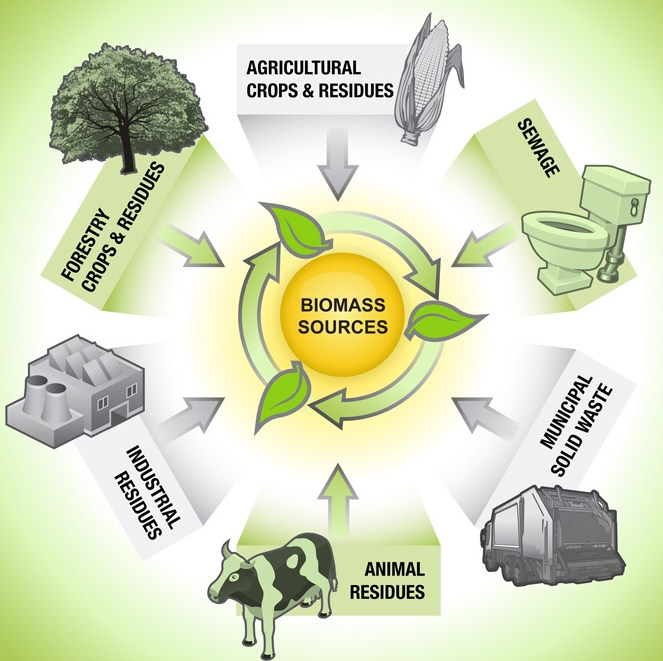where does biomass get its energy from
Biomass as a Renewable Energy Source
1. What are the different types of biomass?

There are various types of biomass that can be used as a renewable energy source. These include:
- Wood and agricultural residues
- Energy crops like switchgrass and miscanthus
- Animal manure and organic waste
- Algae
These biomass resources can be converted into useful forms of energy such as heat, electricity, and biofuels.
2. How does biomass contribute to renewable energy?
Biomass is considered a renewable energy source because it comes from organic materials that can be replenished and regrown. When biomass is burned or converted, it releases energy in the form of heat, which can be used for various purposes. This renewable energy source helps reduce reliance on fossil fuels, lowers greenhouse gas emissions, and promotes sustainability.
3. What are the advantages of using biomass as an energy source?
There are several advantages to using biomass as an energy source:
- Renewable and sustainable
- Reduces greenhouse gas emissions
- Provides a reliable source of energy
- Reduces dependence on fossil fuels
- Helps manage waste and agricultural residues
4. Can biomass be used for electricity generation?
Yes, biomass can be used for electricity generation. Biomass power plants burn organic materials to produce steam, which drives a turbine connected to a generator. This process generates electricity. Biomass can also be converted into biogas, which can be used to produce electricity.
5. Is biomass energy economically viable?
Biomass energy can be economically viable, depending on various factors such as the availability and cost of biomass resources, technological advancements in conversion processes, government incentives or subsidies, and the cost of competing energy sources. Biomass energy can offer long-term sustainability and price stability, making it an attractive option in certain contexts.
6. How does biomass compare to other renewable energy sources?
Biomass has its advantages and disadvantages compared to other renewable energy sources:
- Advantages:
- Can be stored for use when needed
- Provides a consistent and reliable energy source
- Allows for waste management and resource utilization
- Disadvantages:
- Requires large land areas for cultivation
- May compete with food crops
- Can emit air pollutants if not properly managed
7. How is biomass converted into biofuels?
Biomass can be converted into biofuels through various processes such as:
- Thermochemical conversion (e.g., gasification and pyrolysis)
- Biological conversion (e.g., anaerobic digestion and fermentation)
- Chemical conversion (e.g., transesterification)
These processes transform biomass into biofuels like biodiesel, bioethanol, and biogas, which can be used as alternatives to fossil fuels in transportation and other sectors.
8. What is the potential of biomass for sustainable energy generation?
The potential of biomass for sustainable energy generation is significant. Biomass resources are abundant and can be sustainably harvested or produced. Their utilization for renewable energy can lead to reduced greenhouse gas emissions, improved waste management, and increased energy security. However, careful planning and management are essential to ensure the sustainability and minimize any negative environmental impacts.
9. What are the challenges in using biomass as an energy source?
There are several challenges associated with using biomass as an energy source:
- Availability and accessibility of biomass resources
- Logistics and transportation of biomass feedstock
- Efficiency and cost-effectiveness of conversion technologies
- Potential land-use conflicts and competition with food production
- Environmental impacts if not properly managed
10. How can biomass energy contribute to rural development?
Biomass energy can contribute to rural development in various ways:
- Creation of local job opportunities in biomass production and processing
- Utilization of locally available biomass resources
- Improvement of energy access and reliability in rural areas
- Strengthening of local economies through biomass value chains
- Enhancement of agricultural practices and waste management
11. How does biomass compare to fossil fuels in terms of carbon emissions?
Biomass can be carbon-neutral or even carbon-negative if sustainably managed. When biomass is used for energy, the carbon released during combustion is balanced by the carbon absorbed by plants during photosynthesis. In comparison, fossil fuels release carbon that has been stored for millions of years, contributing to the increase in atmospheric carbon dioxide levels and climate change.
12. What are the future prospects for biomass as a renewable energy source?
The future prospects for biomass as a renewable energy source are promising. Ongoing research and development are focused on improving biomass conversion technologies, increasing the efficiency of energy production, and exploring new biomass resources. Biomass can play a significant role in achieving sustainability goals, reducing greenhouse gas emissions, and diversifying energy sources.